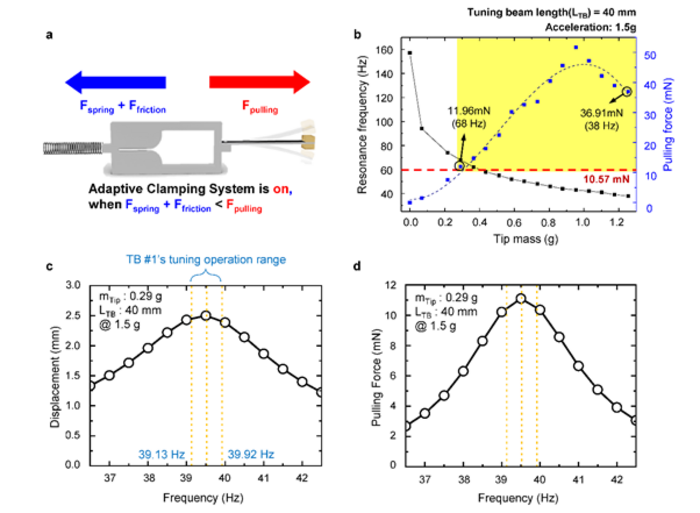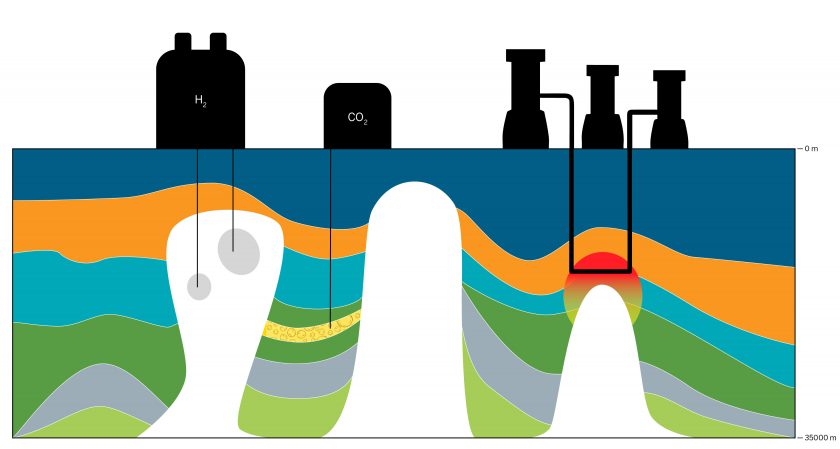
Schematic illustration of different strategies to process lignocellulose. (a) Two industrial routes of processing woodmeal, namely, the pulp industry or the lignin oil industry. (b) Mechanisms of hydrogen-atom transfer to break the ?-O-4 motif, which is abundant in native lignin. (c) Overview of our strategy to first depolymerize native lignin and then repolymerize the resulting oligomers using dynamic covalent cross-linkers.
Credit: ACS Central Science (2022). DOI: 10.1021/acscentsci.2c01257
New process could advance a waste-free system of polymer manufacture and re-use known as the circular plastic economy
Lignin is arguably the most abundant component of biomass that most people have never heard of. That may be about to change.
Many people are familiar with its biochemical cousin cellulose, a byproduct of paper and wood milling. But the same processes produce 50 million tons of lignin annually, industry experts estimate. Once distilled, 98 percent of the inky liquid is burned to produce electricity.
Scientists have been working to find more efficient and sustainable approaches to transform this naturally occurring polymer for use as a cleaner and greener building block to develop next generation materials.
Boston College chemists have developed an approach that uses light to transform lignin into sustainable plastics, the team reported recently in the journal ACS Central Science.
“We developed a catalyst that can selectively break down specific chemical bonds in lignin when it is exposed to light, such that the lignin is converted into intermediate-sized, soluble molecules called oligomers,” said Boston College Assistant Professor of Chemistry Jia Niu, a co-author of the study.
The team then converted the oligomers into sustainable plastics by reacting with a molecular glue called crosslinkers, according to the report. Because of the unique chemical structures of the oligomers created by the catalyst, the plastics made in this way can be chemically broken down back into the oligomers, and reformed from the oligomers and the crosslinker.
The findings advance a potential strategy for the waste-free system of polymer manufacture and re-use known as the circular plastic economy, said report co-author Dunwei Wang, Boston College’s Margaret A. and Thomas A. Vanderslice Chair in Chemistry.
“Transitioning from petroleum to biomass as the feedstock for energy and material production can help to address some of the most important challenges our society is facing, such as climate change and plastic pollution,” said Wang. “New methods that can make advanced materials from lignin will greatly improve the efficiency for biomass utilization.”
Wang and Niu, who share an interest in making sustainable materials, arrived at the project based on Wang’s expertise using photocatalysis to drive chemical transformations and Niu’s work making recyclable polymers.
“The pleasant surprise was the level of controls we were able to exert in decomposing lignin, which is a biopolymer that is notorious for its difficulty to break down,” said Wang. “Such a level of control paves the way for downstream applications.”
The research team aims to further develop the novel method that converts lignin into sustainable plastics that can be readily recycled through chemical means.
Original Article: Researchers use light to convert abundant lignin into plastic that can be continually recycled
More from: Boston College
The Latest Updates from Bing News
Go deeper with Bing News on:
Sustainable plastics
- Research combines DNA origami and photolithography to move one step closer to molecular computers
Molecular computer components could represent a new IT revolution and help us create cheaper, faster, smaller, and more powerful computers. Yet researchers struggle to find ways to assemble them more ...
- Case 11-2024: An 82-Year-Old Woman with Falls and Cognitive Decline
An 82-year-old woman was admitted because of difficulty walking, falls, and cognitive decline. Light touch of the right hand, right knee, and both feet caused pain. A diagnosis was made.
- Shein and Temu Are Driving Oil, Not GM and Toyota
Petroleum consumption in the world’s biggest emitter these days isn’t so much about vehicles as the shirt on your back.
- Should You be Using Synthetic Oil?
Last week we explained the basics of motor oil, from viscosity to additives and everything ... Synthetic Advantages Another major benefit of synthetic oil is molecular consistency. Being an impure ...
Go deeper with Bing News on:
Circular plastic economy
- The Challenges — and Opportunities — of Establishing a More Circular Mushroom Economy
As demand flourishes, managing the waste from the growing process (known as substrate) poses some problems but brings solutions that could ensure a sustainable future for the market ...
- How waste plastic is converted into fuel
Discover the game-changing HiCOP method, turning plastic waste into valuable crude oil, leading the charge towards a cleaner, greener future!
- Investing in the circular economy
The concept of a circular economy has gained prominence in recent years, embracing a regenerative system where products and materials are reduced, reused, and recycled, minimising waste and ...
- Let's not trash recycling technologies that could end plastic waste
Some environmental campaigners claim that attempts to create a circular economy for plastics are doomed to fail – but the arguments can be disingenuous ...
- America's plastic catastrophe
America generates 40 million tons of plastic waste a year — and it can't be recycled.









